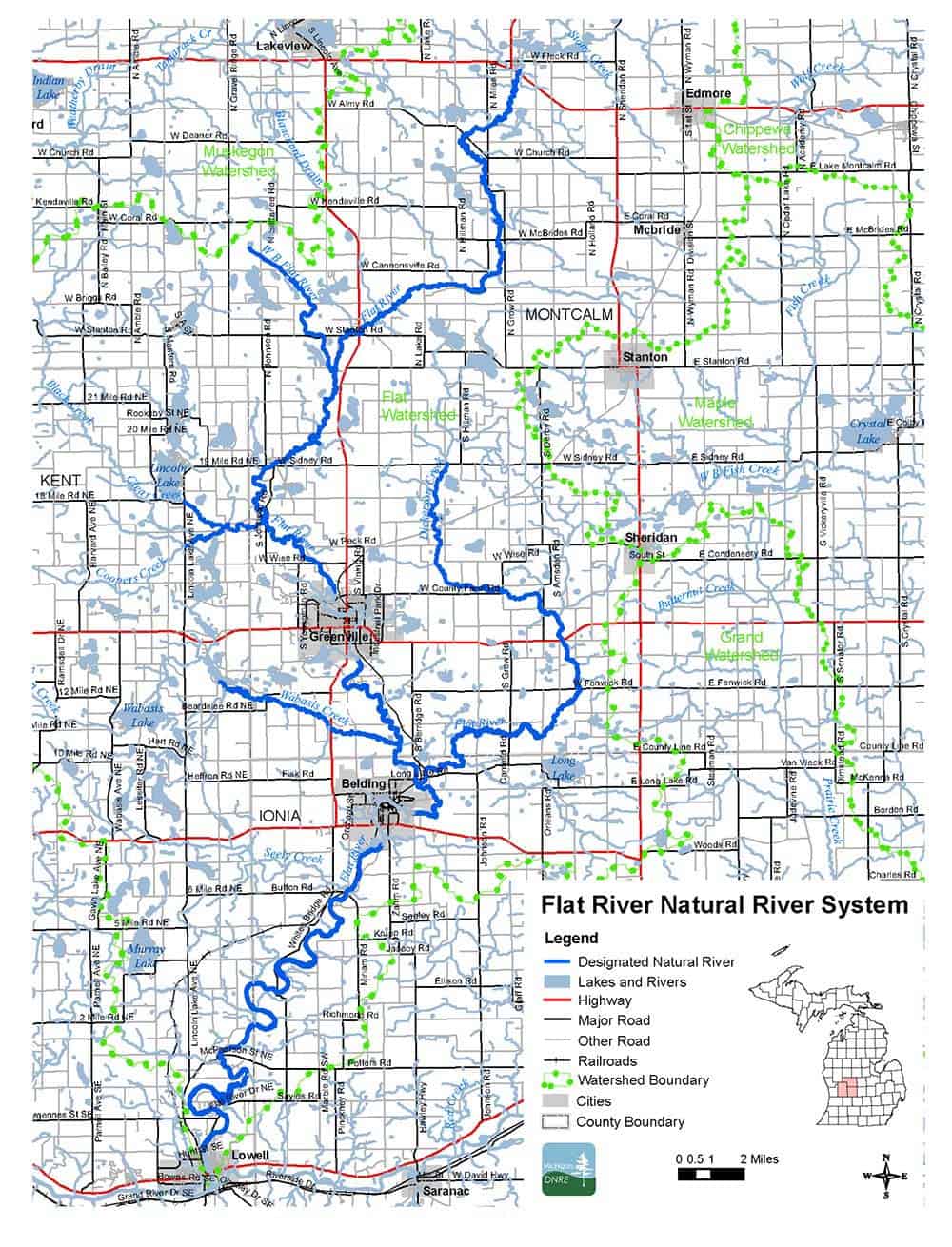Okay, we admit it. Zoning isn’t sexy. People don’t swap stories about it around the office water cooler or make witty posts about it on Facebook. But to those who care about preserving and protecting Michigan’s waterways, it’s an important piece of the resource management puzzle.
Just ask the Kent Conservation District, which is working hard to safeguard the Flat River — one of Michigan’s 16 designated “natural rivers.” Earlier this year, the district and several project partners completed the Flat River Watershed Management Plan. As part of that effort, they hired us, Public Sector Consultants, to conduct a thorough review of relevant township zoning requirements, compare them to state requirements for natural rivers and note where there were differences.
“It wasn’t the most glamorous work, but it was extremely important and worthwhile,” says PSC senior consultant and lead report author Jon Beard. “Because most zoning decisions are made at the local level, the district needed to know exactly where disparities existed so that townships could adjust their plans.”
Sexy? No. A critical starting point for balancing protection and development efforts along the state’s rivers and streams? Absolutely!

Often referred to as one of Michigan’s most picturesque streams, the Flat River flows through three Michigan counties — Ionia, Kent and Montcalm — and is known by anglers as an outstanding source of smallmouth bass. The river is also home to Fallasburg Bridge, one of Michigan’s few remaining covered bridges made from wood.
In November 1979, the Flat River was designated a “natural river” under legislation now incorporated into the Michigan Natural Resources and Environmental Protection Act (Public Act 451 of 1994). The designation brings with it a series of requirements about how the land surrounding the river and its tributaries (referred to as the “river corridor”) can be used.
“While this is a state designation, the effective implementation of natural river zoning requirements relies heavily on local adoption and education,” says Beard. “The last thing we want is for local ordinances to say that residents and property managers can do things that don’t meet state requirements.”
What is Zoning?
According to Free Advice® Legal, zoning is a restriction on the way land within a particular jurisdiction can be used. Through community planning and development, zoning laws help local governmental agencies preserve property values and ensure communities are functional and safe places.
Source: real-estate-law.freeadvice.com

To assist project partners, PSC conducted a thorough review of the zoning ordinances of the 13 municipalities in the designated area. Then, we meticulously noted in township-specific worksheets which ordinances conflicted with, or were different from, state regulations.
“These simple but thorough worksheets are really valuable tools,” says Aaron Snell who works at Streamside Ecological Services and was the lead consultant on developing the watershed management plan. “Now, townships can see exactly where there are contradictions or omissions and work to address them.”
In addition to the worksheets, PSC made some observations and recommendations for each township that should prove valuable as project partners implement the watershed plan. For example:
- Location, location, location. Townships through which the mainstream river flows have taken more steps to incorporate natural river zoning requirements into their plans than those that only border large or small tributaries.
- Out of sight, out of mind. Requirements surrounding the placement of septic systems were most in need of updating. (Local health departments play a prominent role in septic placement, but townships can help ensure it is done properly.)
- Staying abreast of changes is tough. Eleven of the 13 townships had yet to revise their plans to reflect a 2013 update to the state regulations that expanded the designated area — or river corridor — from 300 to 400 feet.
Although much work remains to be done, Snell is encouraged by townships’ receptiveness to the report’s findings and recommendations.
“We have to view zoning through a lot of different lenses,” he says. “Having ordinances that match up with state natural river requirements is just one of them, but an extremely important one, especially given Michigan’s reputation for and dependence on clean, fresh water.”
Several municipalities have already begun implementing the report’s recommendations, which shows a strong commitment to making sure that local codes allow for development consistent with the state’s natural river zoning rule.
Check out a map of state-designated natural rivers in Michigan.
Learn more about the Kent Conservation District.
Want to talk with Jon about this project? [email protected]


